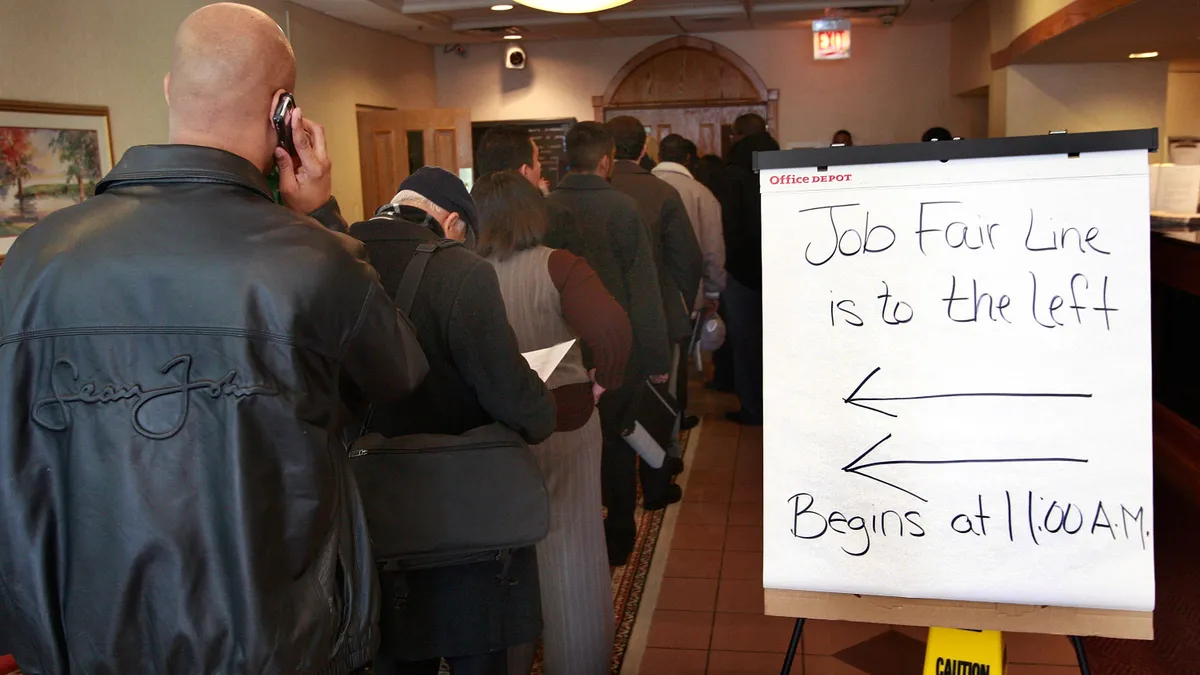Dive Brief:
- The decline in corporate profits will probably speed up in coming quarters, highlighting an economic slowdown that will likely lead to a U.S. recession in 2023, Fitch Ratings said.
- Downward revisions to consensus expectations for earnings next year “will likely accelerate as monetary tightening continues to reduce inflation and growth slows,” Fitch said in a report. “Fitch expects below-trend GDP growth in 2022, given weak incoming data and the hawkish Fed interest rate stance, with a recession likely in 2023.”
- Corporate profits fell on average for four quarters before prior downturns, Fitch said, citing data from the Bureau of Economic Analysis. During the past 12 recessions, average after-tax profits plunged 19%, equivalent to 3% of GDP on average.
Dive Insight:
CFOs attempting to forecast future demand need to set the steady fall in estimates for third-quarter earnings alongside conflicting predictions on whether the dimming outlook presages a U.S. recession.
Among Standard & Poor’s 1500 companies, 40% revised down fiscal year guidance as of Aug. 29 compared with 28% at the same time last year, Fitch said.
Analysts since June 30 have trimmed by 5.5 percentage points estimates for third-quarter earnings growth at S&P 500 companies in the biggest quarterly reduction since COVID-19 hit the economy with full force during the second quarter of 2020, FactSet Senior Earnings Analyst John Butters said.
Also, a record 240 companies mentioned “recession” during second-quarter earnings calls, Butters said in a report, citing data going back to 2010.
Even amid declining earnings estimates, Moody’s Analytics predicts the economy will avoid a downturn despite the Federal Reserve’s most aggressive pullback in stimulus since the 1980s.
“Our baseline forecast is still for the Fed to engineer a soft landing and the economy to skirt recession, while inflation, over time, returns to the central bank’s target” of 2%, Moody’s Analytics Senior Director Ryan Sweet said in a report. The economy will likely grow 1.4% next year and 2.6% in 2024.
The economy shrank 0.6% during the second quarter after slumping 1.6% during the first three months of 2022, meeting the common definition of a recession as at least two consecutive quarters of negative growth.
Still, other signals of possible recession tracked by the National Bureau of Economic Research (NBER) indicate continued growth, including nonfarm employment, consumer spending, industrial production and weekly hours worked, Sweet said. The NBER is widely recognized as the arbiter of when the U.S. economy enters, or leaves, a downturn.
Despite some bright spots in the economy, the challenges for airlines, homebuilders, retailers and other cyclical sectors underscore increasing risks of a downturn, Fitch said.
Airlines confront the prospect of a fuel shock and stagflation, Fitch said, citing “energy dependence, high oil prices and rising risk to the sector’s pandemic-related recovery.”
Homebuilders face increasing odds of that demand will decline further, while changes in consumer spending, unemployment and personal income may pose challenges to retailers, Fitch said.















